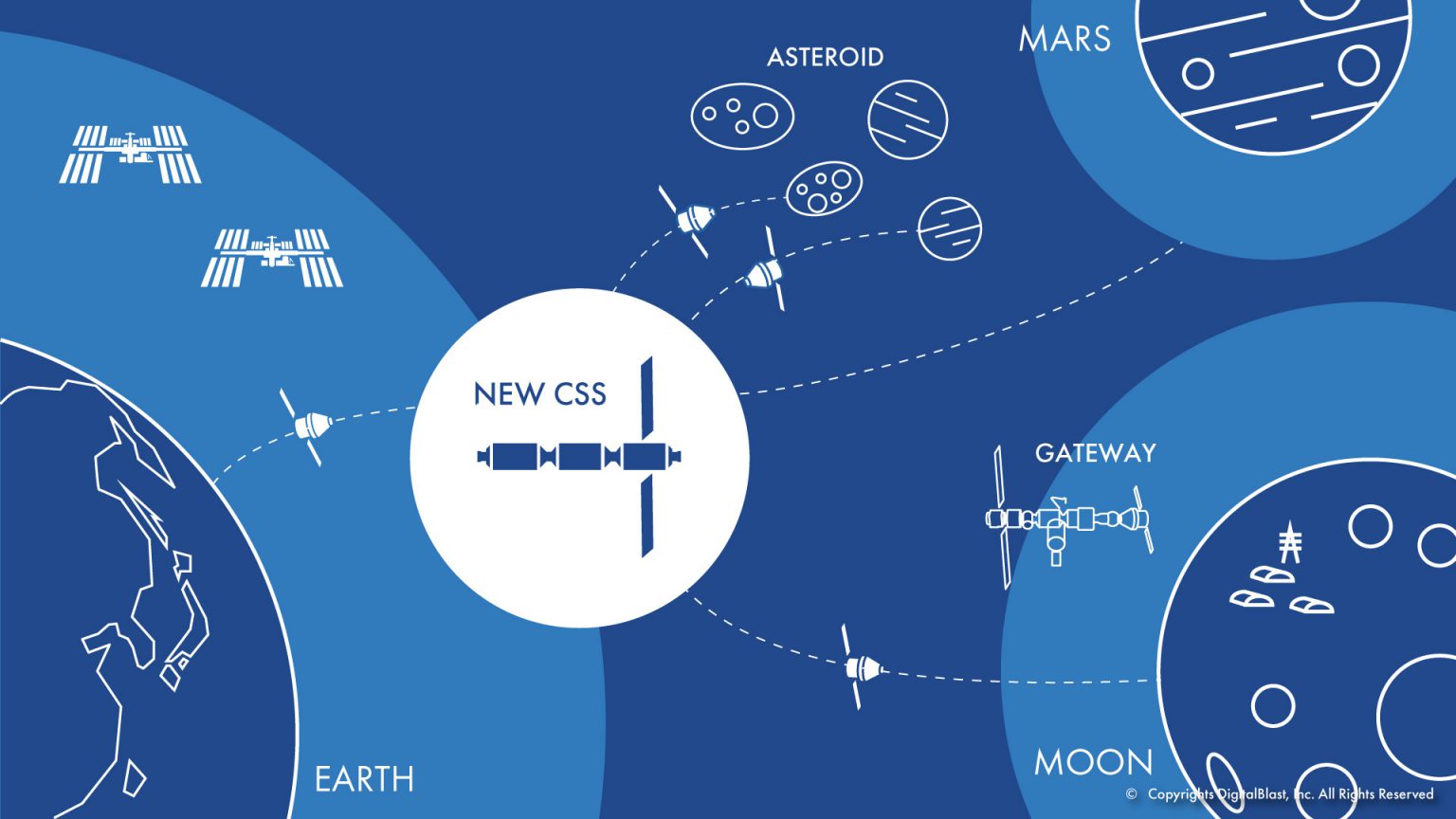
DigitalBlast Announces Japan’s First Private Space Station (CSS) Concept – Aiming to Build a Hub for the Creation and Integration of the LEO Economic Zone and the Interplanetary Economic Zone as a Post-ISS Initiative
December 12, 2022
DigitalBlast Inc., which supports the revitalization of the space industry and the creation of new businesses in the space sector (Headquarters: Chiyoda-ku, Tokyo, CEO: Shingo Horiguchi, hereinafter referred to as DigitalBlast), announces the launch of Japan’s first private-led space station, the “Civilian Space Station (CSS) Concept”. They plan to launch the first module by 2030.
Purpose and Background
In November 2022, the Japanese government also expressed its intention to participate in the extension of the International Space Station (ISS) operations until 2030. However, the ISS is scheduled to end its operations in 2030, and it is necessary to consider the Post-ISS after the retirement of the ISS. In the United States, the development of space stations that will take on the role of ‘Post-ISS’ is being advanced by four private companies: Bule Origin, Nanoracks, and Northrop Grumman, which were selected by NASA’s Commercial Low Earth Orbit Development (CLD) program, and Axiom Space, which aims to launch the world’s first commercial space station in the mid-2020s. Meanwhile, specific movements within Japan remain undecided. Furthermore, in recent years, there has been a surge in manned space exploration, including the Artemis program, and efforts for activities on the Gateway and the lunar surface must also be considered in parallel.
Taking this situation into account, DigitalBlast has launched the Civilian Space Station (CSS) Concept to build Japan’s first privately-led space station. Japan has a significant track record in the development and operation of the ‘Kibo’ Japanese Experiment Module (JEM). Utilizing this technology and knowledge, we aim to create and integrate the Low Earth Orbit (LEO) economic zone and the interplanetary economic zone.
About the ‘Civilian Space Station (CSS) Concept’
In the development of private space stations that precede in the United States, the goal is to construct a space station led by the private sector within Japan. DigitalBlast will take the lead, aiming to launch the first module by 2030 in collaboration with partner companies. In addition to services for companies, research institutions, and government agencies, such as space experiment services and communication infrastructure, they also plan to offer services to general consumers as entertainment utilizing space, including sports and video/image streaming.

Image of the planned space station
About the Modules of the Constructed Space Station
The modules of the space station being constructed will include a Habitat & Core Module with functions such as communication, docking mechanisms, and crew living facilities, in addition to a Science Module and an Entertainment Module, making up the three components of the plan.
The Science Module will provide an environment for space experiments and functions related to resource extraction. It will house space experiment devices, including the small life science experiment device AMAZ developed by DigitalBlast, and serve as an experimental environment for companies and research institutions. It will also serve as a platform for the storage and supply of resources and fuel collected from asteroids. In addition to the terrestrial recovery of planetary resources, the space station will implement on-demand production capabilities with 3D printers, realizing In-Space Manufacturing (ISM).
The Entertainment Module will provide a multipurpose space for entertainment for the crew staying at the space station, as well as services that allow the general public on Earth to enjoy space through VR and the metaverse. The multipurpose space is envisioned to be used for sports, hotels, filming studios, and more.

From left to right, the three modules of Entertainment, Habitat & Core, and Science are aligned.
Future Prospects
DigitalBlast envisions a scenario in which, through this initiative, it not only leads the creation of a civilian-led Low Earth Orbit (LEO) economic zone but also contributes to the economic zones of the Moon and Mars driven by the Artemis program. Furthermore, it aims to enable round trips of interplanetary probes based at the space station, creating an interplanetary economic zone that utilizes resources from Near-Earth Asteroids (NEAs) based on In-Situ Resource Utilization (ISRU). This space station is intended to function as a new station that serves as a starting point for the ground, LEO economic zone, interplanetary economic zone, and the Moon and Mars economic zones. To “provide value in space,” DigitalBlast will create new economic zones in space and promote private use of space.

About DigitalBlast, Inc.
DigitalBlast is on a mission to redefine the value of space with its motto, “Make Space Valuable.” To enhance the worth of Japan’s space sector, it’s crucial to develop a variety of revenue streams that extend beyond BtoG (business-to-government) transactions. Boasting a diverse team skilled in business strategy, digital technology, and promotion, we take pride in our comprehensive solutions. Our goal is to expand our clients’ revenue options and forge new value within the space industry.
Company Name: DigitalBlast Inc.
Office: Jinbocho mitsui building 19F,1-105 Kanda Jinbocho, Chiyoda-ku, Tokyo, 101-0051, Japan
Representative: Shingo Horiguchi (CEO)
Established: December 2018
Website: https://digitalblast.co.jp/
Business Content: Planning, design, and support for corporate transformation, development and support of digital technology, integrated marketing services, digital marketing services, internet advertising services, video production and distribution.


